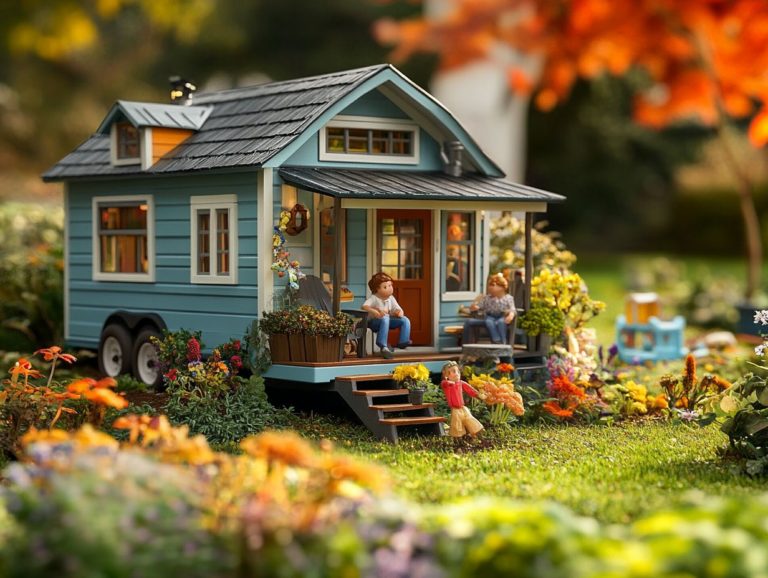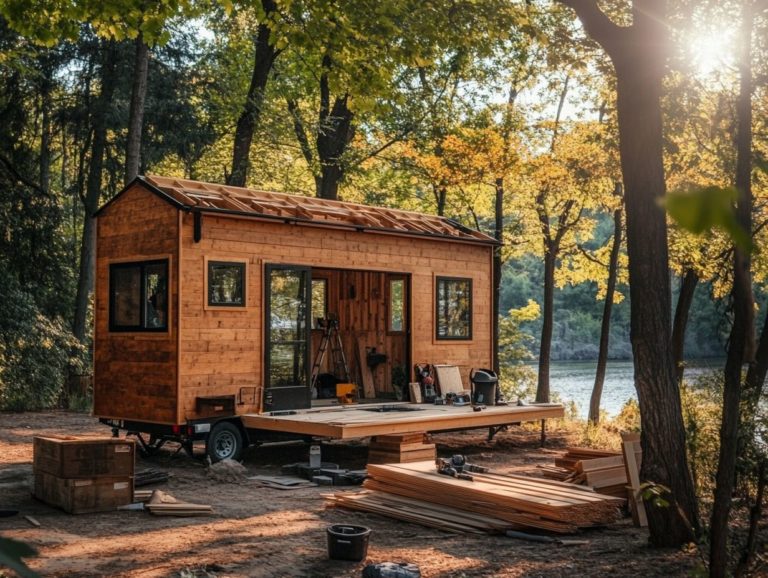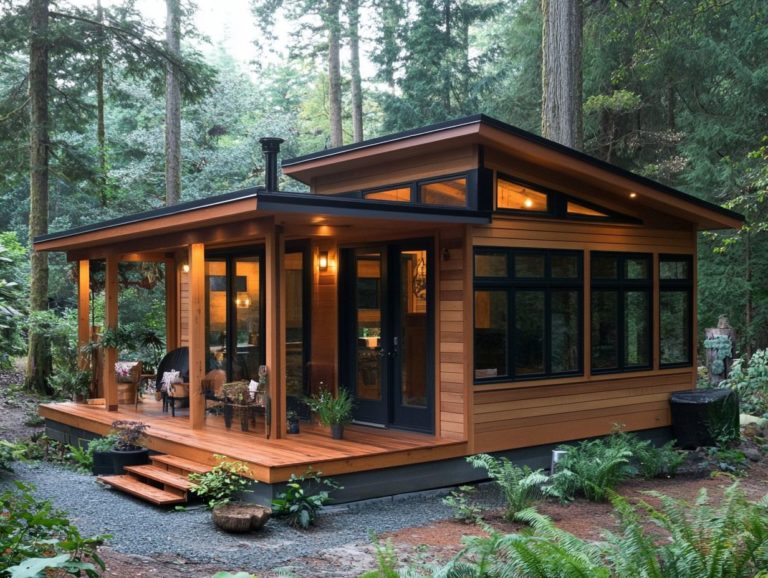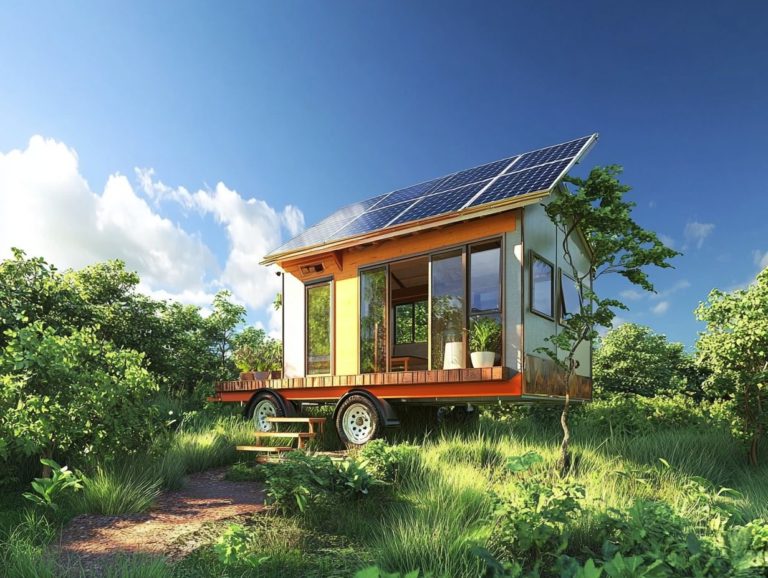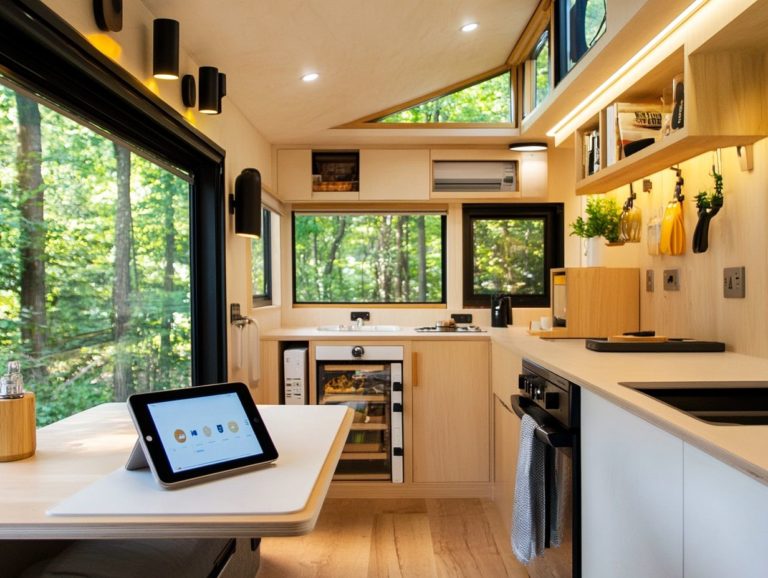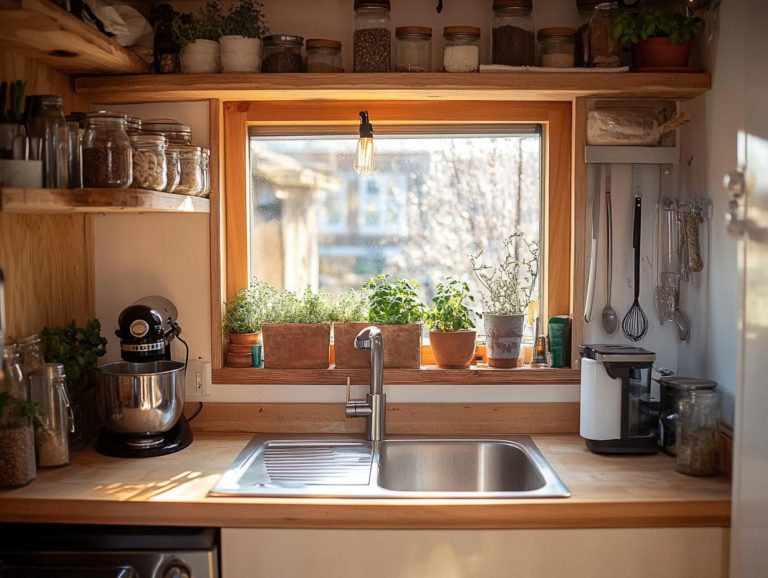What Are the Top Tiny House Myths?
Tiny houses are taking the world by storm! But with that popularity come many misconceptions. This article sets out to debunk six prevalent myths surrounding tiny houses. Whether you re intrigued by the legality, comfort, or sustainability aspects, we ll delve into each myth, uncovering the truths that underpin the tiny house movement. Prepare to reshape your understanding of tiny living trends!
Contents [hide]
Key Takeaways:
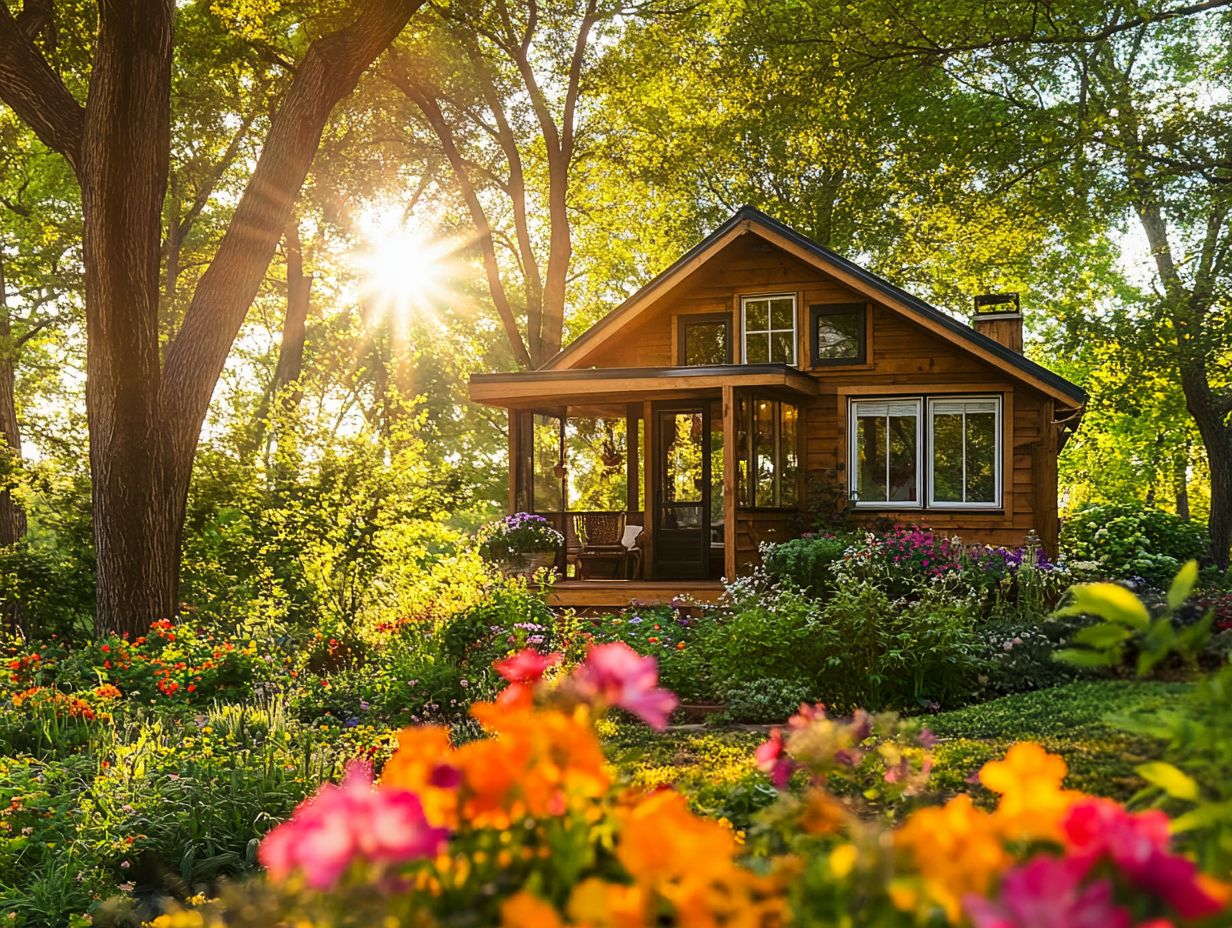
- Tiny houses are not necessarily illegal, as zoning laws and regulations vary by location.
- The cost of building and living in a tiny house can be significantly lower than traditional homes.
- Tiny houses can be creatively designed and utilize space-saving techniques to maximize comfort and functionality.
Defining Tiny Houses
Tiny houses epitomize compact, thoughtfully designed living spaces. They capture the essence of a minimalist lifestyle.
These homes offer a sustainable option for those wishing to reduce their impact on the environment while enjoying modern conveniences. Ranging from 100 to 400 square feet, these innovative structures are crafted from high-quality materials, making them functional and surprisingly affordable compared to traditional homes.
The tiny home movement is gaining traction, fostering a dynamic community where individuals can pursue their dreams of downsizing and living simply.
This lifestyle encourages the use of sustainable materials, allowing you to create an environmentally friendly dwelling that harmonizes with its surroundings. Beyond cost savings, embracing tiny living cultivates a strong sense of community, as many tiny house owners find camaraderie in shared values.
The compact nature of these homes inspires you to prioritize your needs and desires. This often leads to a life filled with rich experiences rather than an abundance of possessions. Workshops and meetups further enrich this growing network, motivating newcomers to embrace a more intentional way of living that resonates deeply with the principles of sustainability and simplicity.
Myth 1: Tiny Houses are Illegal
One of the most common misconceptions about tiny houses is the belief that they are illegal due to a maze of zoning laws and building codes that govern housing in many communities. This often leaves potential tiny house owners feeling hesitant about embracing this lifestyle. However, dive into the legal considerations of zoning regulations to discover that many areas do permit tiny homes under certain conditions. In fact, securing a building permit might be more straightforward than you initially thought.
Clarifying Zoning Laws and Regulations
Zoning laws are pivotal in determining where you can place your tiny house, often creating a maze of confusion for those contemplating this alternative lifestyle. Grasping the intricacies of these regulations is vital for you as a prospective tiny house owner, since different communities impose distinct zoning classifications that can dramatically influence the feasibility of your plans.
For example, certain areas may allow tiny houses on wheels to be considered recreational vehicles, while others might categorize them strictly as permanent residences, demanding compliance with specific building codes and regulations.
Navigating the process of obtaining necessary permits can differ significantly from one jurisdiction to another. In cities like Portland, Oregon, tiny homes are frequently embraced in organized clusters, underscoring the importance of adhering to density regulations.
Conversely, regions in California may require you to follow stricter environmental assessments, highlighting the necessity of understanding local ordinances as you pursue a minimalist lifestyle.
Don t let outdated fears hold you back from the tiny house lifestyle you dream of!
Myth 2: Tiny Houses are Too Expensive
A prevalent myth surrounding tiny houses is that they come with a high cost, which discourages many from considering this remarkably affordable option in the housing market.
However, contrary to popular belief, those who embrace tiny living often discover that, when you consider various financing options, the expense of building or buying a tiny home can be significantly less than that of traditional homes and even luxury tiny homes.
This makes tiny homes a compelling choice for many individuals seeking a more economical lifestyle.
Breaking Down the Costs of Building and Living in a Tiny House
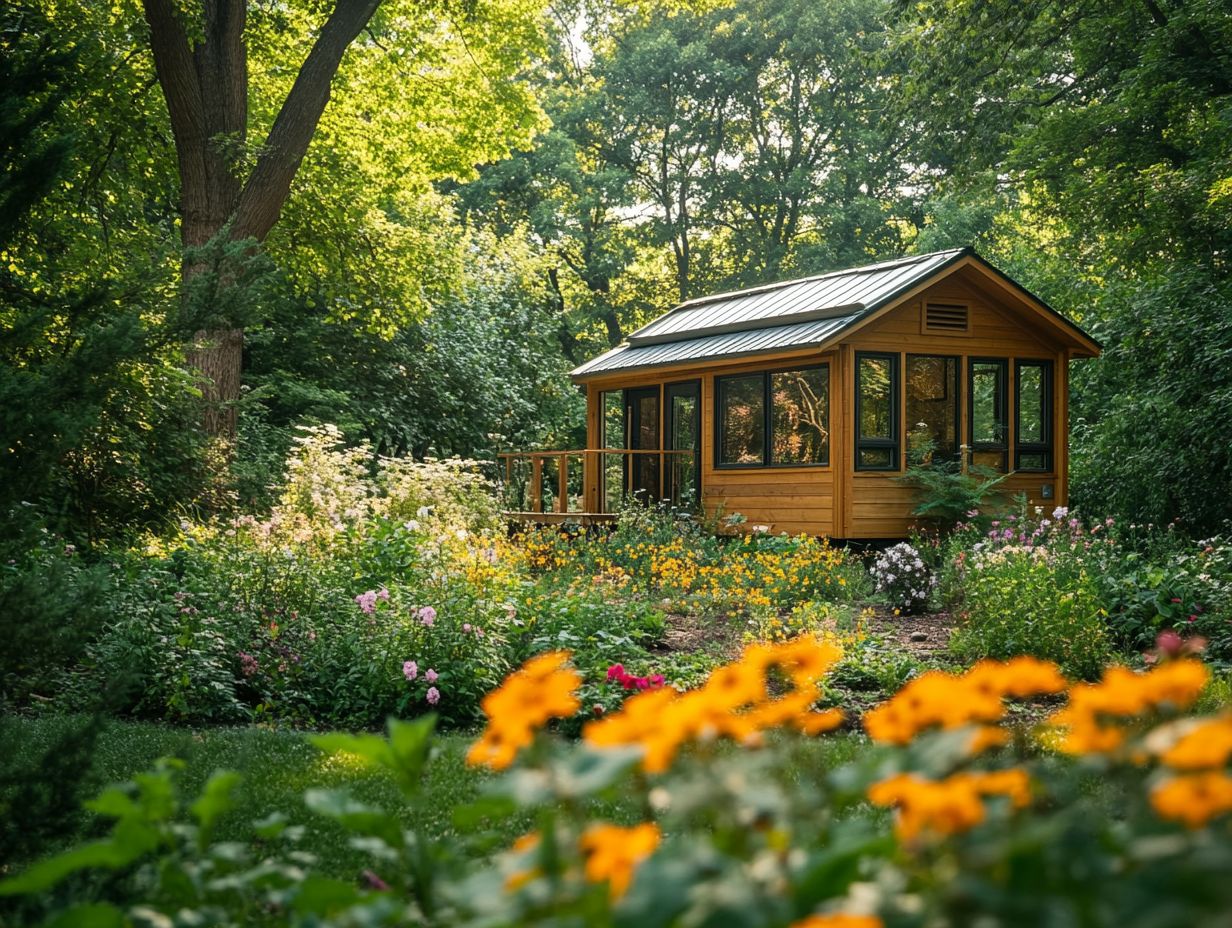
Discovering the costs of tiny house living can unlock an exciting new lifestyle, often falling below those of traditional homes.
Unlike conventional housing, which can burden you with high land acquisition fees, smaller plots for tiny houses are typically more affordable and easier to locate. Construction costs tend to follow a more economical path due to the compact nature of tiny homes, allowing you to save on both materials and labor.
You ll also notice that additional expenses, like utilities, are generally lower, as these homes require significantly less energy for heating and cooling. Explore financing options today and see how tiny living could be both affordable and fulfilling!
The reduction in construction waste not only cuts costs but also contributes to a more sustainable building process, enhancing the appeal of this innovative living arrangement for those seeking to reduce their environmental impact.
Myth 3: Tiny Houses are Uncomfortable and Cramped
Many people think tiny houses are uncomfortable and cramped because of their limited space. However, with smart designs and innovative storage solutions, these homes offer a surprisingly comfortable living experience that rivals traditional homes.
By incorporating multi-purpose furniture and strategic layouts, you can maximize your living space and enjoy modern conveniences, effectively dispelling this common misconception about tiny house designs.
Exploring Creative Design and Space-Saving Techniques
Creative design elements and space optimization techniques are essential in tiny houses, transforming limited square footage into functional and comfortable living spaces that align perfectly with modern lifestyles.
Incorporating innovative storage solutions such as foldable shelving units, hidden drawers, and under-bed compartments allows you to maximize every inch of available space in your tiny home.
Multi-purpose furniture is key to this transformation, featuring pieces like convertible sofas that double as beds and dining tables that collapse when not in use. These strategies enhance livability by making the most of your space and promote an inviting, organized environment.
Ultimately, these thoughtful design choices cultivate a more fulfilling living experience, allowing you to embrace minimalist living without compromising on comfort or style, making it a desirable tiny house investment.
Myth 4: Tiny Houses are Only for Single People
The notion that tiny houses are solely for singles misses the mark, as countless families have flourished in this lifestyle. They reap the rewards of family living within thoughtfully designed tiny house communities that promote community living.
With carefully crafted designs that optimize space, these tiny home features accommodate a variety of family needs while fostering a vibrant sense of community.
Dispelling the Myth and Discussing Family-Friendly Tiny House Designs
Family-friendly tiny house designs seamlessly integrate essential features that ensure comfortable living for families, demonstrating that small spaces can indeed be both functional and delightful.
These designs thoughtfully maximize space while catering to the diverse needs of each family member, offering rooms that serve more than one purpose and smart ways to store things. Picture this: lofted beds that free up floor space for play! How fantastic is that?
Many options also embrace eco-friendly materials and energy-efficient appliances, promoting a sustainable lifestyle that resonates with modern family values. By opting for these innovative layouts, families can relish close-knit living experiences while nurturing quality time together, all within a cozy and inviting environment.
Myth 5: Tiny Houses are Not Sustainable
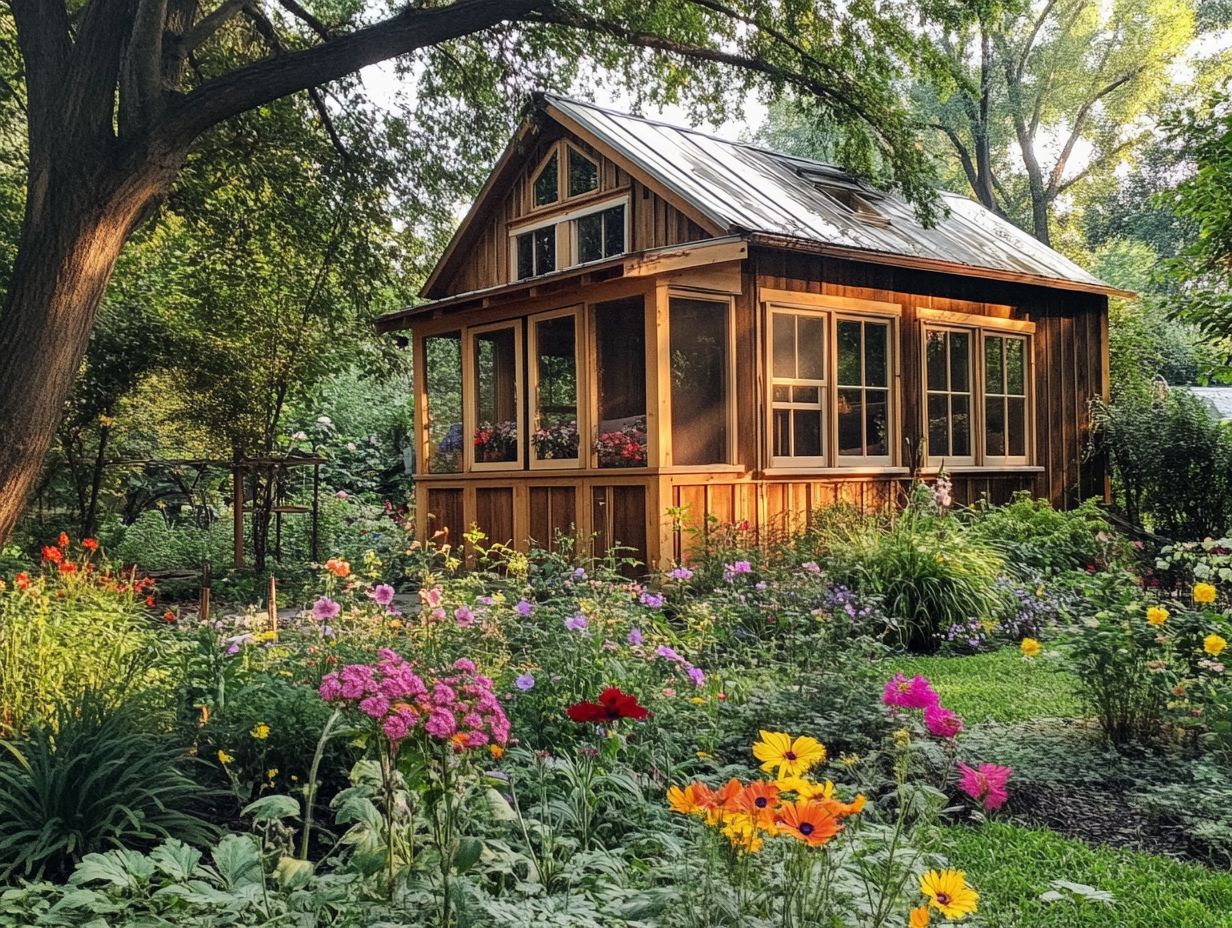
A common misconception about tiny houses is that they lack sustainability. In truth, these compact dwellings frequently embody sustainable living principles, leading to a considerably lower environmental impact than traditional homes.
By maximizing space and resources, tiny houses effectively minimize construction waste and enhance energy efficiency, perfectly aligning with eco-friendly lifestyle choices that appeal to modern buyers in the housing market.
Examining the Environmental Benefits of Tiny Houses and Their Designs
Tiny houses present remarkable environmental advantages, making them an excellent choice for individuals like you who are dedicated to sustainable living and eager to reduce their ecological footprint, the impact of your activities on the environment.
These compact dwellings also feature energy-efficient appliances, ensuring that you can minimize energy usage even in limited space. By opting for sustainable materials, tiny houses not only shrink the carbon footprint during construction but also champion renewable resources that are gentler on the environment.
The design of these homes naturally minimizes construction waste, requiring fewer raw materials compared to traditional houses. This mindful approach encourages both builders and homeowners to embrace eco-friendly practices, cultivating a community devoted to preserving the planet for future generations.
Myth 6: Tiny Houses Have No Resale Value
The notion that tiny houses lack resale value is a lingering myth that may dissuade you from exploring this distinctive housing option. In reality, the tiny house movement has sparked a growing demand in the housing market, positioning tiny house investments as a viable choice for many discerning buyers. Luxury tiny homes and thoughtfully designed properties frequently retain or even appreciate in value, thanks to their unique features and sustainable allure.
Considering the Resale Market for Tiny Houses and How to Maximize Value
Understanding the resale market for tiny houses is essential for both current and prospective owners. It reveals the money-making potential and shows how certain features can maximize value over time.
By focusing on aspects such as energy efficiency, innovative designs, and smart storage solutions, you can make your tiny home highly desirable! Choosing prime locations near urban centers or scenic landscapes can greatly elevate resale value, attracting a wider audience.
Keep an eye on new market trends, including the growing interest in eco-friendly living, which can help refine your strategies. Recognizing which amenities like high-quality appliances, outdoor spaces, and modern technology appeal to buyers will also play a crucial role in enhancing your tiny home’s overall appeal to buyers and future return on investment, especially in the context of the tiny house investment landscape.
Frequently Asked Questions
Busting the Biggest Tiny House Myths!
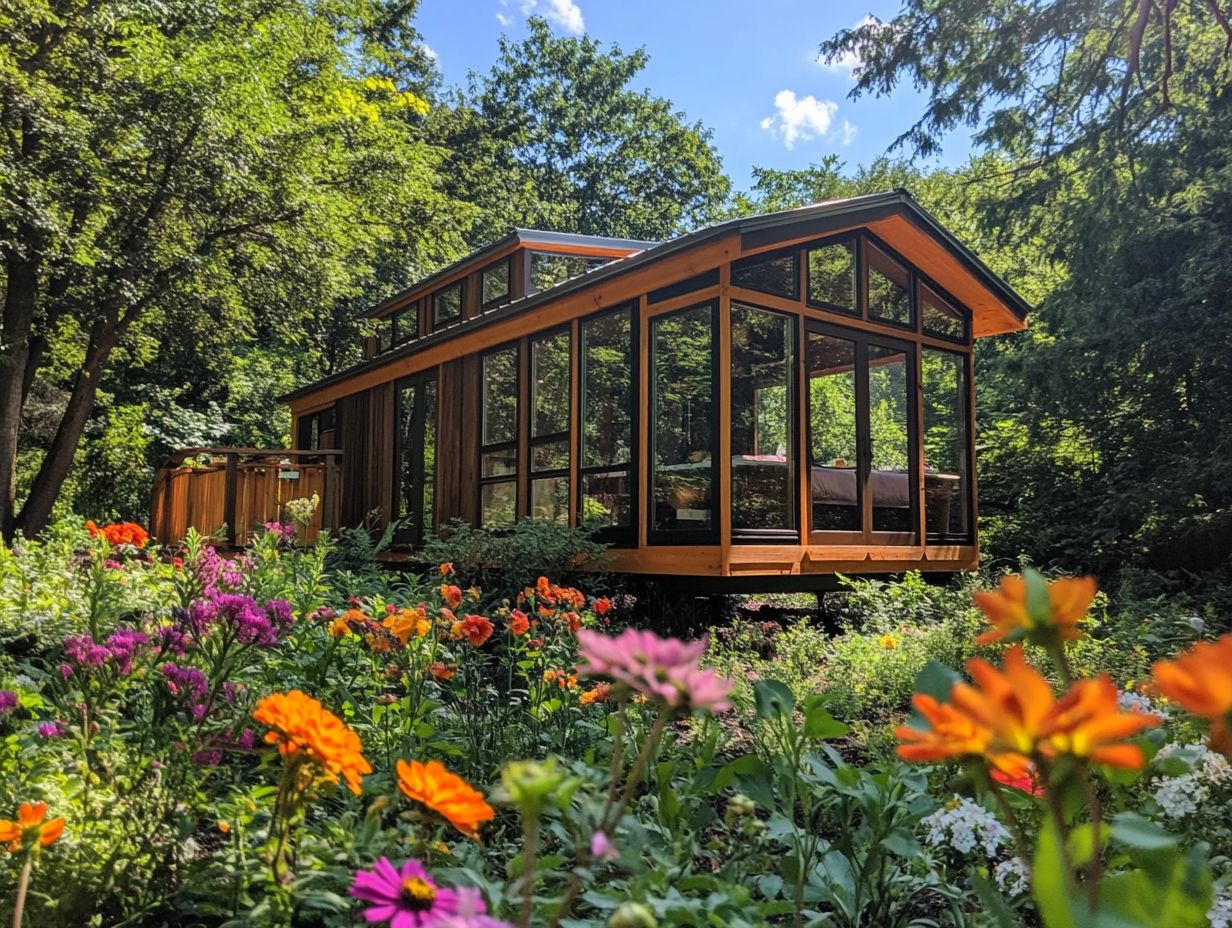
The top tiny house myths include:
- The belief that tiny houses are illegal.
- They are too small and cramped to live in.
- They are only for young people.
Are tiny houses illegal?
No, tiny houses are not inherently illegal. However, zoning laws and building codes can vary by location, so it s important to research and comply with regulations before building or living in a tiny house.
Do tiny houses have enough space to live comfortably?
This is a common misconception. While tiny houses may be smaller than traditional homes, they are designed to maximize space and functionality. Many people find that living in a tiny house can be quite comfortable and freeing.
Are tiny houses only for young people?
While tiny houses are often associated with younger generations, they are suitable for people of all ages. In fact, many retirees choose to downsize and live in a tiny house to simplify their lifestyle and reduce expenses.
Do tiny houses have running water and electricity?
Yes, most tiny houses are equipped with essential utilities, including running water and electricity. Some may also feature solar panels or composting toilets to enhance sustainability and self-sufficiency.
Is it cheaper to live in a tiny house?
It depends on individual situations, but generally, living in a tiny house can be more affordable than a traditional home. This is due to lower construction and maintenance costs, as well as reduced utility bills. However, it s crucial to consider all expenses and conduct thorough research before deciding to live in a tiny house.

